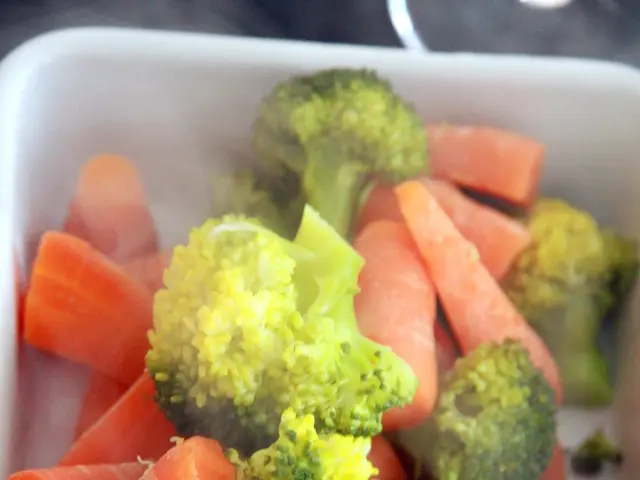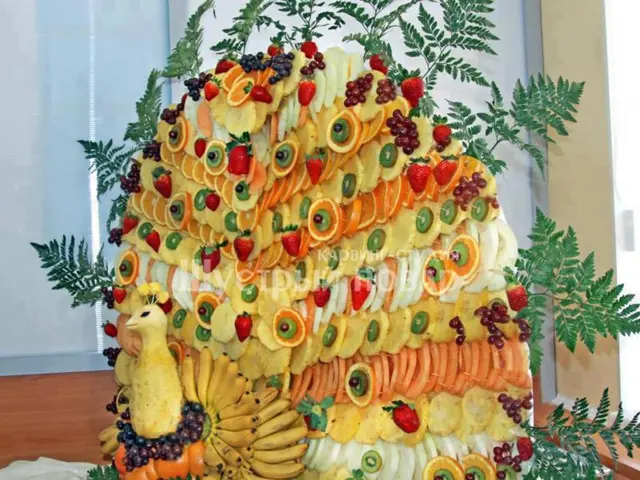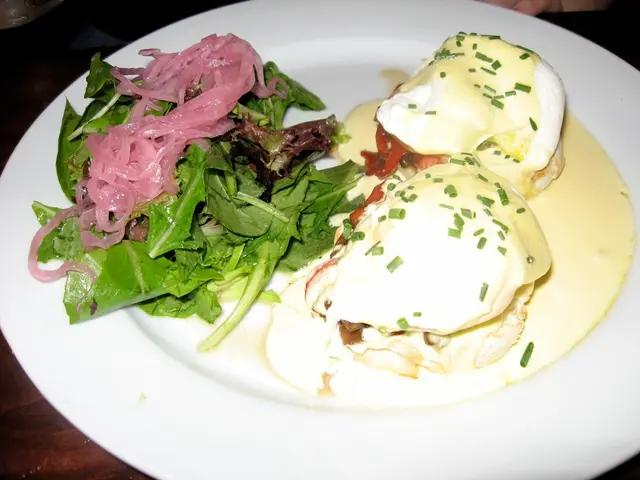Colorful Challenge: The Shift Towards Natural Dyes and the Manufacturing Predicament
The Trump administration is advocating for food manufacturers to transition to using natural colorings.
MAEVE O'CONNOR, HOST:
The Trump administration is pushing for the elimination of potentially harmful synthetic dyes, found in foods, beverages, and medications, giving them a vibrant hue. At a recent briefing, the Food and Drug Administration head, Marty Makary, suggested a simple solution — switch to all-natural alternatives.
(SOUNDBITE OF ARCHIVED RECORDING)
MARTY MAKARY: How about watermelon juice?
MAEVE O'CONNOR: Yet, is it as easy as swapping synthetic dyes for some fresh fruit juice? NPR's Sam Erenberg reports.
SAM ERENBERG, BYLINE: Mark Oliverio, owner of Oliverio Peppers, packs jars of pickled peppers, Italian sauces, and other goodies. His factory in Clarksburg, West Virginia, turns out 18,000 jars a day.
MARK OLIVERIO: My father started it in 1972.
SAM ERENBERG: Five years ago, his grocery store customers requested more all-natural products. They asked if he could ditch the yellow dye No. 5 in his bright yellow banana peppers. So, Oliverio experimented with natural alternatives.
OLIVERIO: I tried powdered turmeric root initially, but it didn't hold its color as long, so I switched to a liquid turmeric dye.
SAM ERENBERG: The shift to turmeric added to the cost, but it enabled him to take yellow dye No. 5 off his label. This move put Oliverio ahead of the curve, as Europe and Canada have since adopted stricter food dye rules. The U.S. banned red dye No. 3 in January, and now the Trump administration is asking the food, beverage, and pharmaceutical industries to voluntarily eliminate all petroleum-based dyes by the end of next year. New all-natural dyes have recently been approved for manufacturers to use instead. However, switching isn't always straightforward.
MELISSA WRIGHT: Extracting large volumes of color from natural sources is far more complex than simply mixing chemical dyes.
SAM ERENBERG: Melissa Wright, a food safety expert at Virginia Tech University, explains that sourcing natural colors can be challenging due to limited supplies and inconsistencies in quality.
WRIGHT: Blues are going to be the really tough one. There's not a lot of naturally sourced blue.
SAM ERENBERG: Green poses similar challenges since it's a mix of blue and yellow. Cooking with natural dyes also presents difficulties.
WRIGHT: These naturally derived colors tend to not be as stable, especially with heat or acid. So, if you're adding them to acidic sodas or to products that you have to heat, it's going to become a problem because they're just not going to be as vivid as the customers are used to seeing.
SAM ERENBERG: Loyal consumers may vocalize their displeasure when familiar products begin to lose their vibrant shades.
WRIGHT: When I eat Doritos and Cheetos, I have that orange dust on my fingers, right? And if you don't have that, is it really a Doritos-eating experience?
SAM ERENBERG: Mark Oliverio understands his customers' preference for color. The cauliflower he dyes bright yellow with turmeric sells far better than the one with no dye at all.
OLIVERIO: But I will tell you that my cauliflower sells way more. So, people like that. They like that color. Ninety percent of the people eat with their eyes, and I think 90% of the people don't read and don't care what's in that jar.
SAM ERENBERG: Sam Erenberg, NPR News.
NPR transcripts are created on a rush deadline by an NPR contractor. This text may not be in its final form and may be updated or revised in the future. Accuracy and availability may vary.
food-colors
artificial-colors
natural-dyes
food-manufacturing
synthetic-dyes
consumer-preferences
doritos
cheetos
- The Trump administration's suggestion for the elimination of synthetic dyes in foods and beverages has spurred discussions about the shift towards natural dyes, highlighting potential challenges in the food manufacturing sector.
- Despite the push for natural dyes, consumer preferences remain strong for vibrant food colors, as demonstrated by the sales of Mark Oliverio's artificially colored cauliflower that far exceed those of the un-dyed variety, even with the move towards all-natural products.








